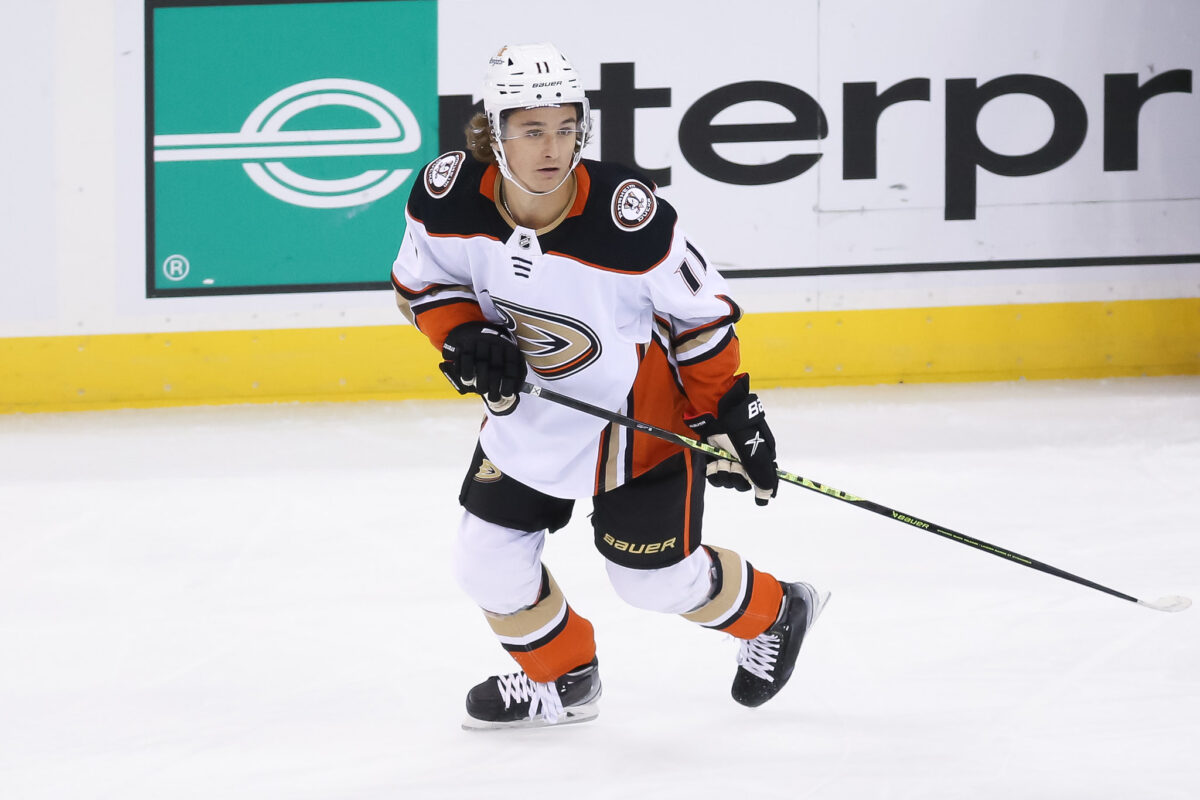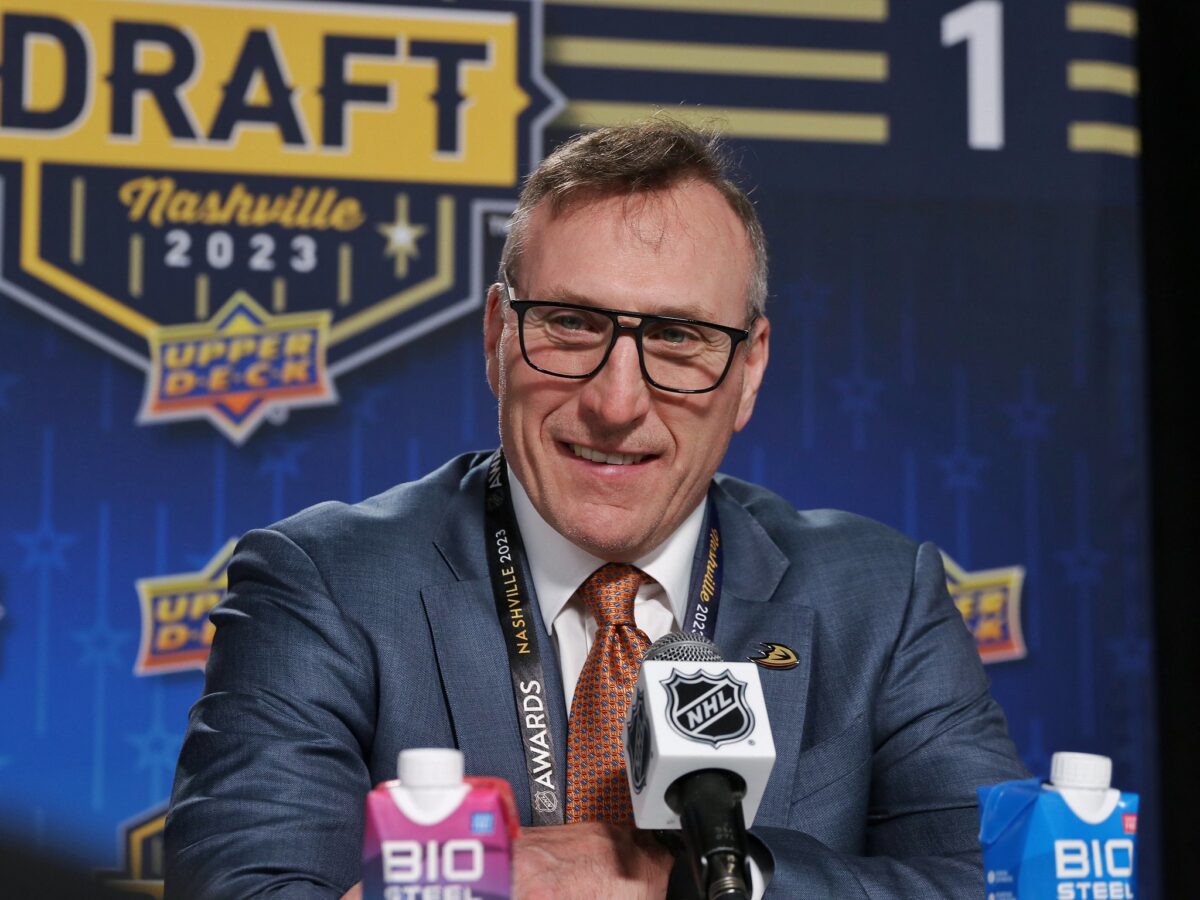After consecutive weeks of draft and free agency buzz, the middle of July is one of the more quiet portions of the NHL calendar. The Anaheim Ducks surprised the hockey world by taking Beckett Sennecke third overall in the 2024 NHL Draft, but have been relatively quiet since.
Related: Ducks’ Surprising Selection of Sennecke Will Solidify Top-6
The Ducks are in the middle of a six-year playoff drought, the longest the franchise has ever experienced. There’s been a great deal of losing in recent years, but there’s hope for a more successful future. Anaheim is one of a handful of teams currently undergoing a rebuild, a process that sheds older and expiring assets in exchange for prospects and draft capital.
With several years of rebuilding behind them, it’s fair to wonder how much longer this process will take. There’s no set timetable for a rebuild, and patience varies from front office to front office. The Ducks seem to be doing all the right things to build a competitive roster, but results have yet to manifest. Today, we’ll be looking at why the Ducks needed to rebuild and the steps the organization has taken in the following years.
How the Ducks Got Here
The Ducks’ current six-year playoff drought comes at the heels of one of the most successful eras in franchise history. From 2005-06 to 2017-18, Anaheim qualified for the playoffs in 11 out of 13 seasons. The early part of this era saw the team win its only Stanley Cup in 2007, but the later years saw unparalleled consistency. The Ducks won the Pacific Division in five straight seasons from 2012-13 to 2016-17 — a streak that ended at the hands of the expansion Vegas Golden Knights.
The 2010s had several dynasties. The Chicago Blackhawks, Pittsburgh Penguins, and Los Angeles Kings accounted for eight Stanley Cups in nine years from 2009-2017. As a result, the Ducks could not secure a second Stanley Cup.
Maintaining a Stanley Cup-caliber roster is impossible over time, and the cracks began showing. Corey Perry’s production was in a free fall. Second-line center Ryan Kesler was a perennial Selke candidate at his peak, but he never truly recovered from hip resurfacing surgery in the 2017 offseason. The Golden Knights expansion draft the same year exposed flaws in what was believed to be a stacked defensive pipeline. Kevin Bieksa’s no-move clause forced younger options unprotected, and general manager Bob Murray effectively threw Shea Theodore at them to prevent losing Sami Vatanen, Brandon Montour, or Josh Manson.
Mismanaged assets and an aging core defined the next few seasons. Instead of acknowledging the club needed to rebuild, Murray favored a re-tool on the fly. This strategy relies on draft picks to refresh the ranks, but that’s a tough task when Anaheim was annually selecting from the mid-to-late 20s. Jacob Larsson, Max Jones, Sam Steel, and Max Comtois needed to become productive NHL players. They didn’t, and the Ducks went from finishing with 101 standings points in 2017-18 to only 80 the following year.
Building Through the Draft
The draft is the most important aspect of an organization’s rebuild. Youth replacing aging talent is the typical process for a rebuild, but accumulating young, high-end assets strengthens a team’s leverage to trade based on team needs. With the ninth selection in the 2019 Draft, Anaheim took Trevor Zegras. Zegras has developed a polarizing reputation, but he’s made a huge impact for the Ducks both on and off the ice. The playmaking center has been one of the more consistent producers since his debut in 2021, and his wizard-like puck skills frequently show up on highlight reels.

Anaheim has spent a lot of draft capital on centers and defense in the last five years. Along with Zegras, the Ducks used first-round picks on centers Mason McTavish (third overall in 2021), Nathan Gaucher (22nd, 2022), and Leo Carlsson (second, 2023). After nearly depleting the defensive prospect cupboards to stay competitive, they’ve rebuilt to have one of the strongest pipelines in the league. Jamie Drysdale (sixth overall, 2020) and Pavel Mintyukov (tenth, 2022) were the only top-10 selections, but later picks like Jackson LaCombe, Tristan Luneau, Olen Zellweger, Noah Warren, and Tyson Hinds have either reached the NHL or are expected to reach it shortly.
With a surplus of defensemen in the organization, the Ducks have strengthened some of their weaker groups. Despite being the highest-drafted and most experienced defenseman in their pipeline, Drysdale was traded to the Philadelphia Flyers for Cutter Gauthier. The fifth overall pick in the 2022 Draft, Gauthier is a power forward with a knack for goal-scoring. The trade not only addresses the team’s need for wingers, but it directly addresses their biggest on-ice weakness. The Ducks finished 30th in goals last season and 32nd the year prior.
Last month’s draft continued the theme of shoring up weak spots. The Ducks need an impact right winger, and Sennecke could be the answer. Ducks fans will be paying close attention to his upcoming season with the Oshawa Generals of the Ontario Hockey League. The 6-foot-3 forward needs to continue to grow into his frame, but he’s already considered a solid two-way player. Anaheim’s second pick in the first round was defenseman Stian Solberg. Solberg isn’t a huge scoring threat, but he is a physical force. He draws some similarities to Radko Gudas, which gives the Ducks even more options to mix and match puck-moving defensemen with a traditional stay-at-home defender.
The Pat Verbeek Era
In November 2021, Bob Murray resigned as general manager of the Ducks, a position he had held since 2008. Four months later, Pat Verbeek was introduced as the seventh general manager in franchise history. Verbeek had a fascinating career as a player, amassing 522 goals and 2,905 penalty minutes (PIMs), the only person in NHL history to hit both 500 goals and 2,500 PIMs. Since retiring as a player, he held front-office roles with the Tampa Bay Lightning and Detroit Red Wings under Steve Yzerman.
Verbeek’s arrival came at a time when Anaheim lacked any significant identity on the ice. Ryan Getzlaf, longtime captain and the last holdover from the 2007 Cup team was about to retire. Zegras scoring with the Michigan-style wraparound is fun to watch, but it doesn’t create an identity when he’s the only person on the roster who can pull it off. Instead, Verbeek has spent the last few drafts and offseason building the team around several themes. One of the most obvious themes is size. Power forwards Carlsson, Gaucher, Gauthier, and Sennecke are all at least 6-foot-2.

Size is not the only factor, and Verbeek and consensus tend to deviate from here. With the second overall pick in 2023, most pre-draft speculation had Adam Fantilli going to Anaheim. However, Verbeek went with Carlsson. Among the reasons, Carlsson had experience at the professional level in Sweden and was already a well-established two-way player with a bright hockey IQ. Sennecke was an even bigger deviation from expectation. He addresses Anaheim’s biggest need along the right wing, but he needs to continue to develop to make good on his expectations. If development pans out across the board, the Ducks are looking at a top line of Gauthier, Carlsson, and Sennecke as one of the most physically imposing lines in the NHL.
Free agency has been a mixed bag in the Verbeek era. His first offseason saw the arrival of New York Rangers teammates Ryan Strome and Frank Vatrano. Vatrano has sufficiently played his role as a top-six hair-trigger with 59 goals over the last two seasons, including a career-high 37 last season. However, Strome was the more expensive and long-term signing and he’s effectively settled into a third-line role. The next offseason brought in Alex Killorn and Gudas, two players brought up in Tampa Bay’s system while Verbeek was in the front office. These deals had their share fair of criticism as they’re older players, but both seem like better signings a year later. Gudas was a tremendous mentor on the blue line for Anaheim’s young defensive core, and his hard-nosed style of play has endeared him to fans and teammates. Killorn’s debut season in Anaheim was derailed by injuries, but he’s still expected to hold a top-six role while their prospects continue to develop.
The State of the Rebuild Is Encouraging but Unproven
The Ducks have taken significant strides toward building a competitive team. Their prospect pool is often considered the best in the league and all signs point to a return to the postseason within a few years. That said, there are no guarantees in a rebuild. Anaheim’s return to the playoffs hinges on these prospects developing to their potential and meshing into Verbeek’s vision for the club.
Verbeek was an attractive front-office hire because of his association with Yzerman and what they accomplished together with Tampa Bay’s roster. The duo then went to work on a rebuild in Detroit before Verbeek’s hiring in Anaheim broke up the band. The Red Wings’ rebuild was a massive undertaking, but Yzerman was trusted and came in with a ton of good faith as a franchise icon. However, Detroit’s playoff drought just extended to eight seasons. Last season was the closest they have been, but outrageous shooting luck wasn’t enough to account for the roster’s shortcomings and they fell out of a playoff spot in the final days.
Rebuilds take time, but there’s no set amount of time one needs to take. As more time passes, the more the organization resembles Verbeek’s vision. For better or worse, this is his team now. It’s far too early to deem anything a failure, but the on-ice results haven’t improved in half a decade. The Ducks have been quiet in free agency thus far, which could open the door for some younger players to make the roster out of camp. The 2024-25 season will be the most important in Anaheim’s rebuild. At some point, the results on the ice need to improve. It’s difficult to imagine the young core staying intact if players begin to show signs of plateauing.
